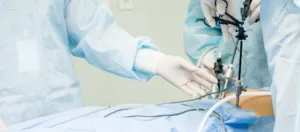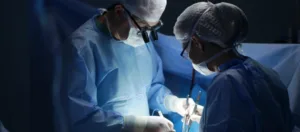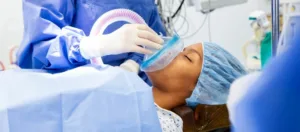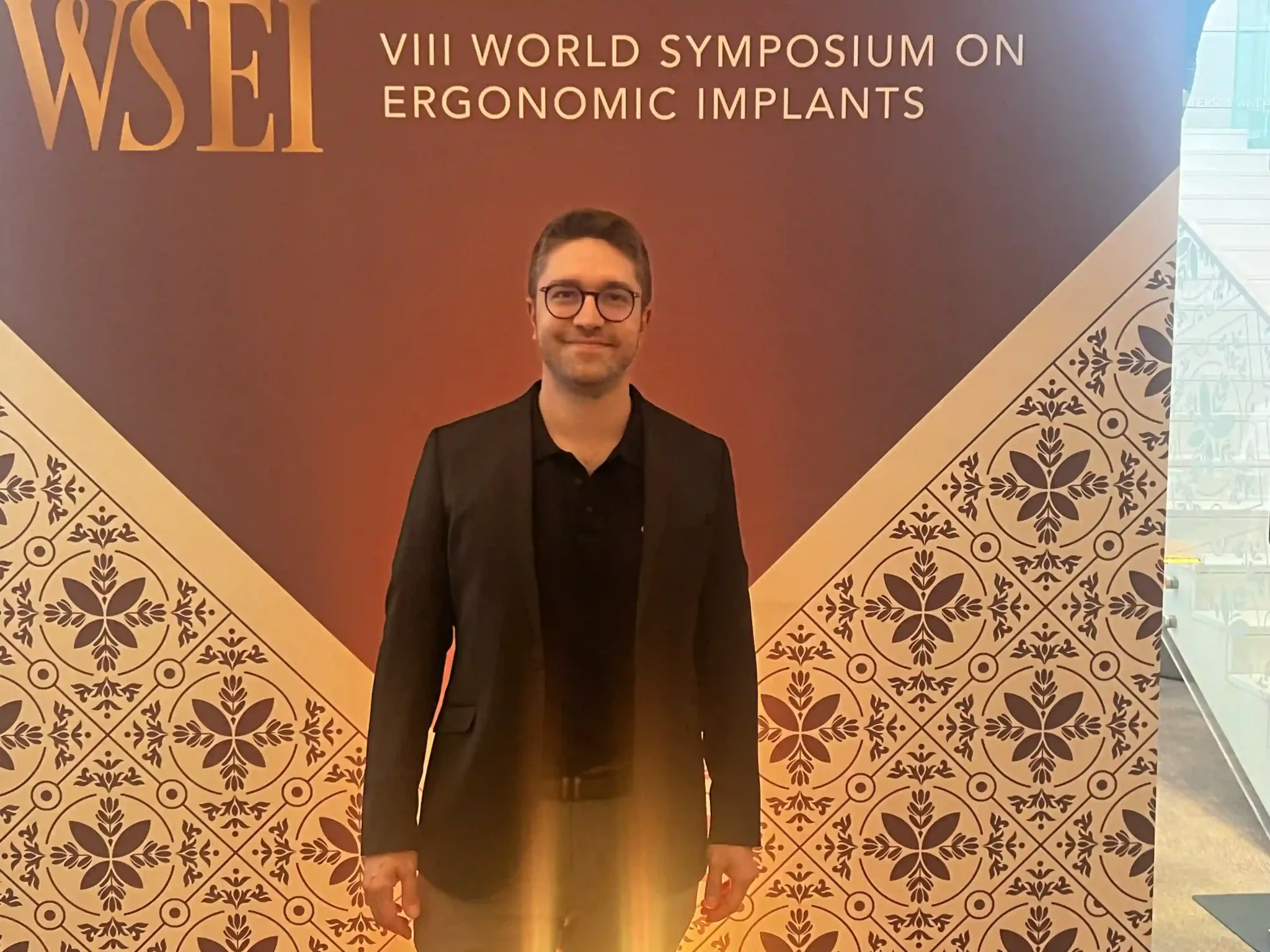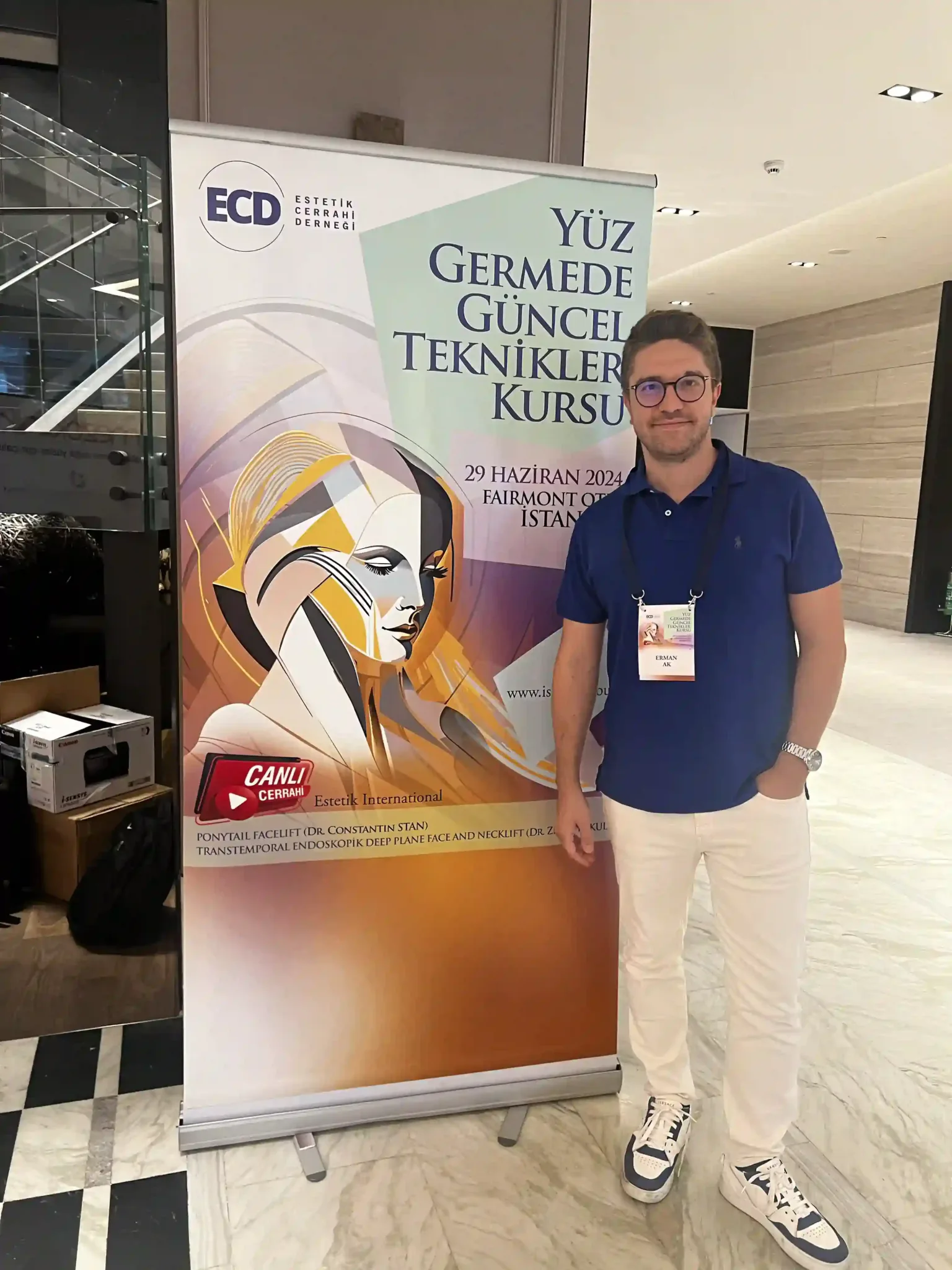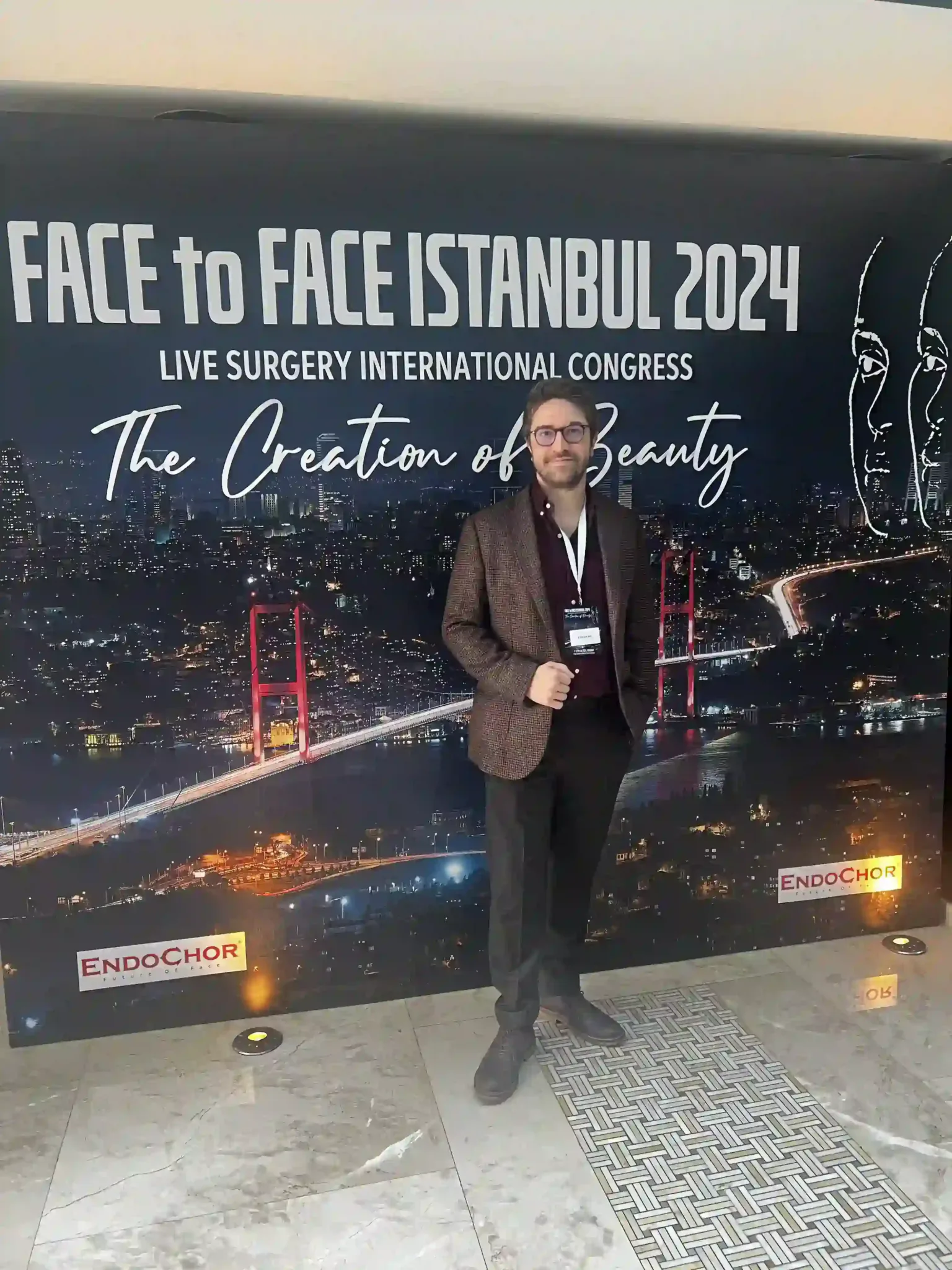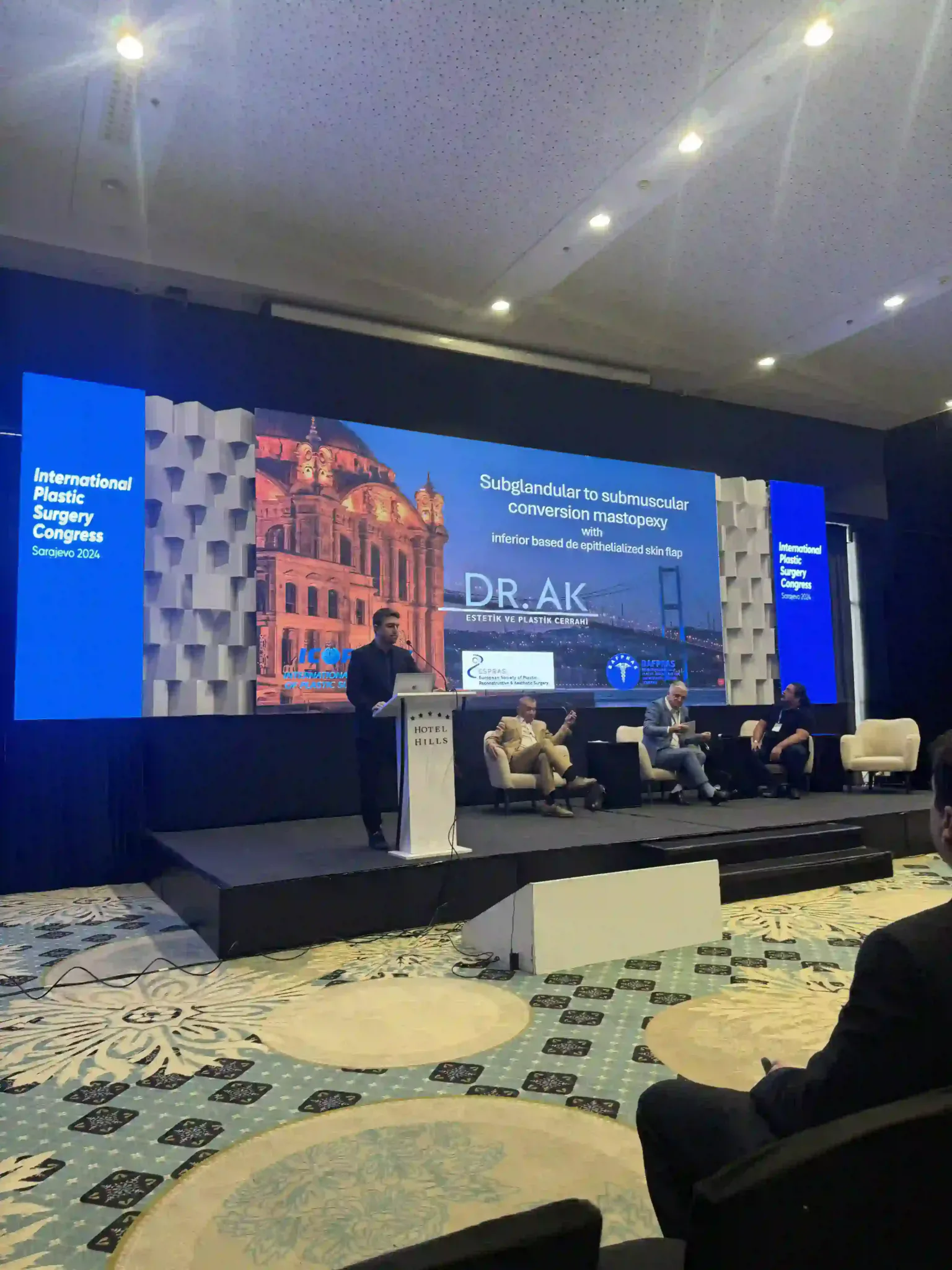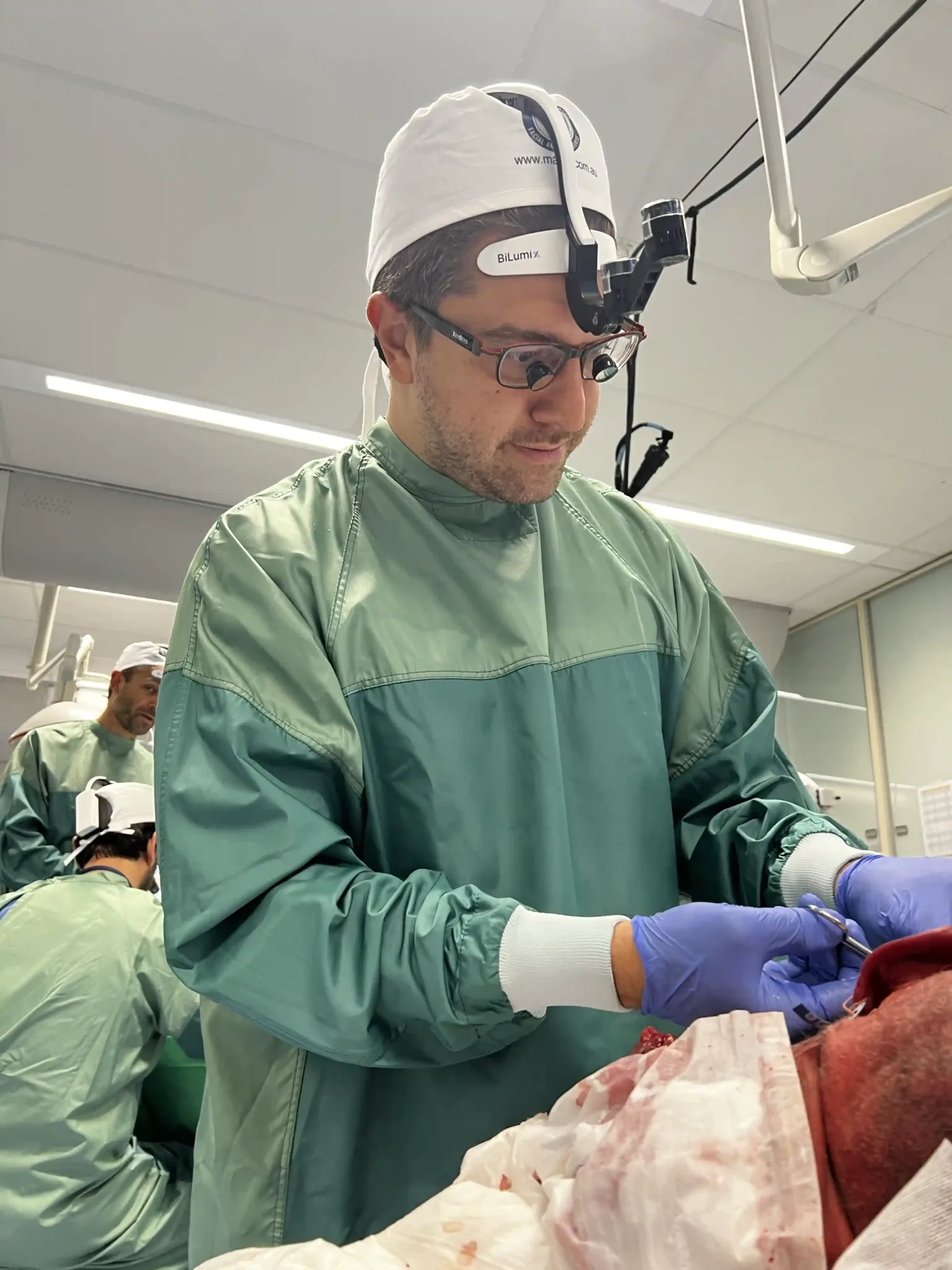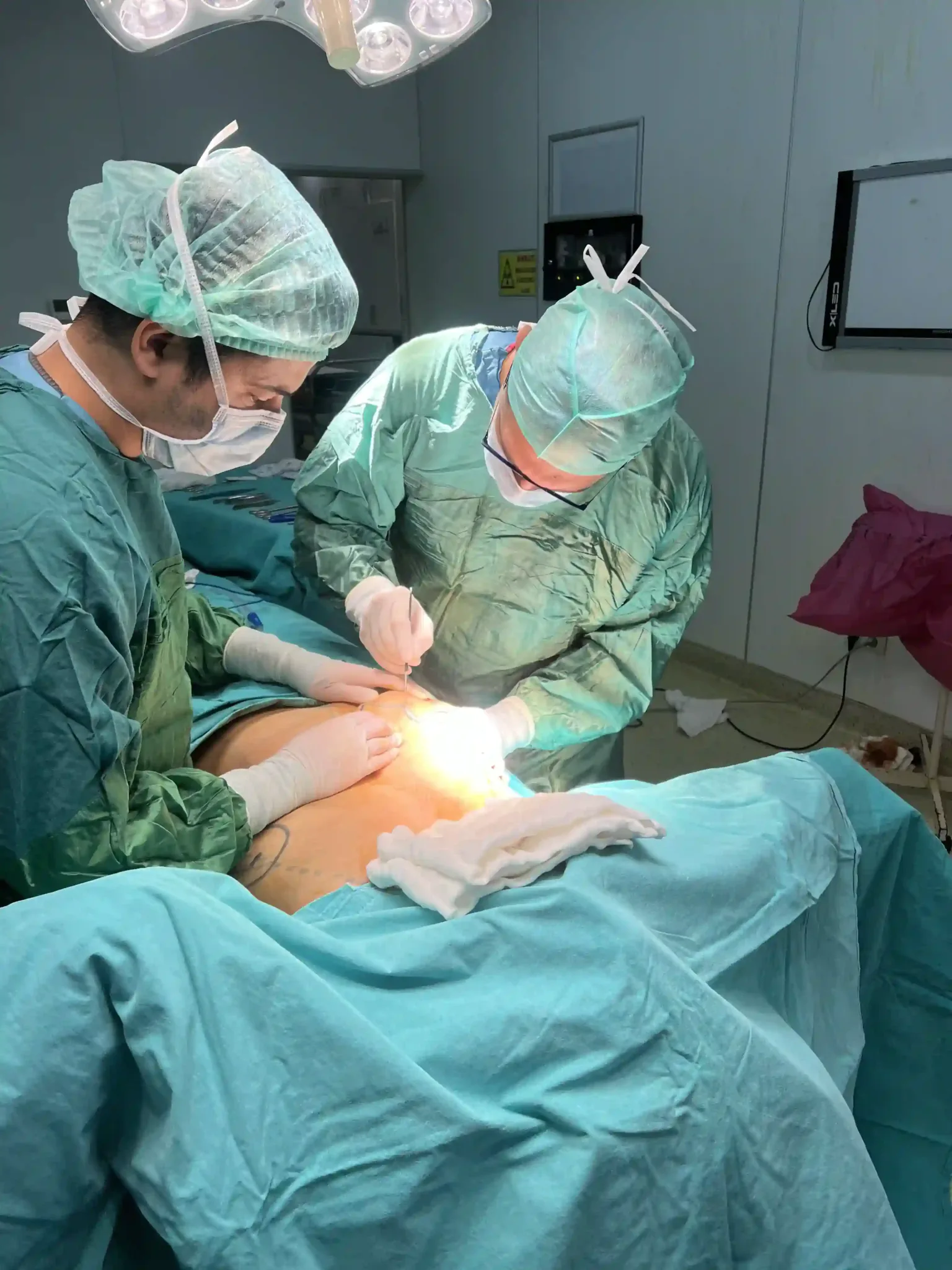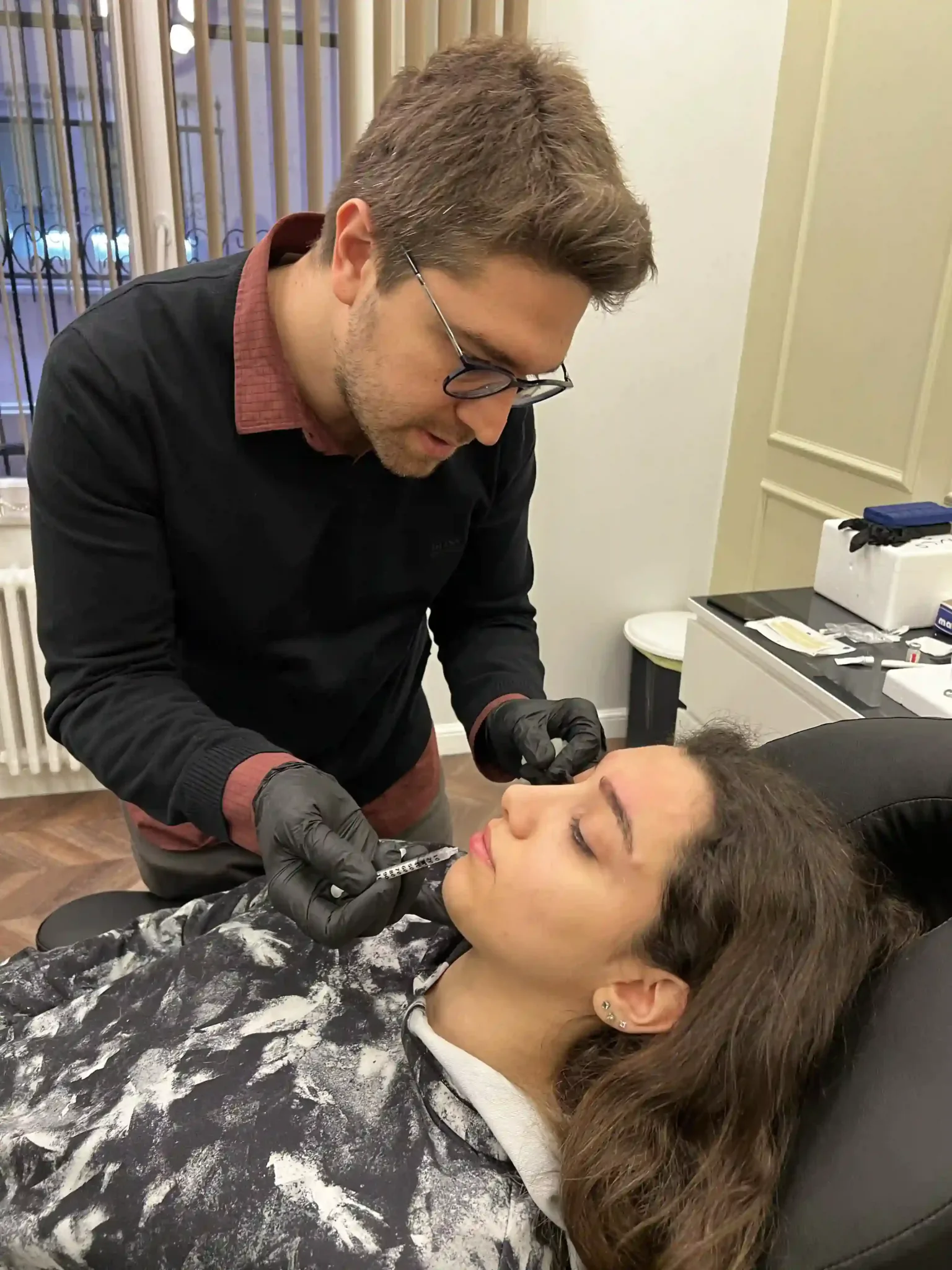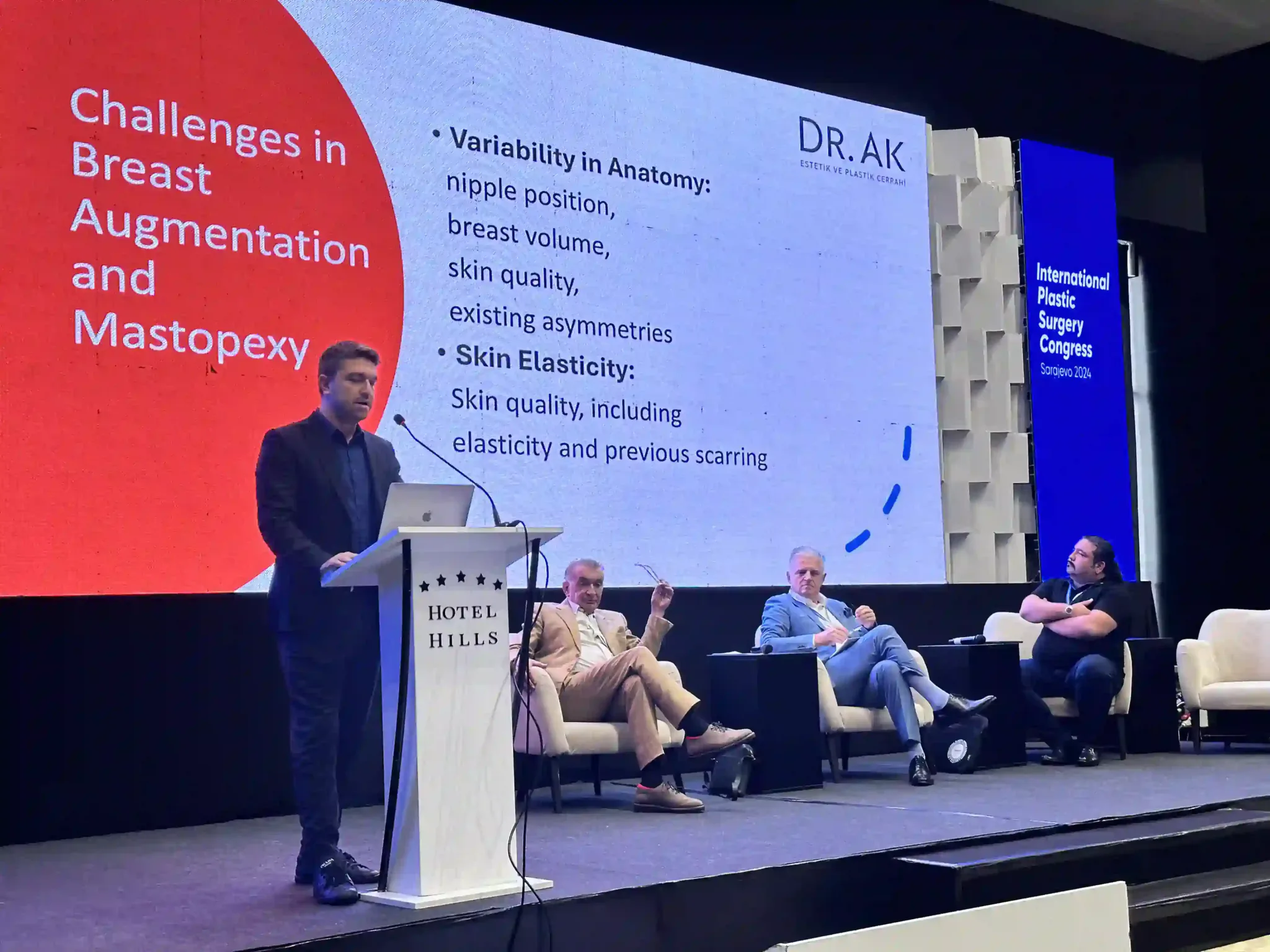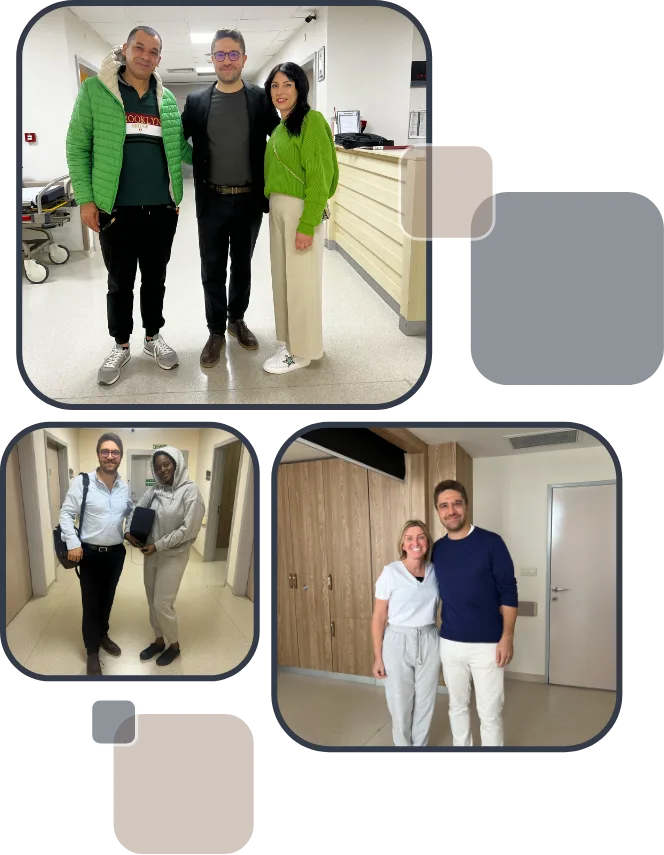How are the ‘anchors’ that hold our face in place released in a deep plane neck lift?
The soft tissues of our face do not rest loosely on the bony skeleton. They are effectively “anchored” to deeper tissues and bones by strong, fibrous structures called retaining ligaments. These ligaments are our primary support system that holds the skin and the crucial SMAS layer beneath it in place.
One of the main reasons for aging is that these ligaments weaken, stretch, and succumb to gravity over time. When these “anchors” loosen, the mobile soft tissues they support begin to descend. The clinical consequences are very familiar. Loosening of the ligaments in the cheek region causes the malar fat pads to fall, the midface to flatten, and the nasolabial folds to deepen. Weakening of the ligaments along the jawline allows mobile tissues to droop below the mandibular border, directly causing jowling.
These ligaments are also the main obstacle to surgical rejuvenation. If they are not released during surgery, no matter how much tension is applied, they will continue to hold the tissues in their sagging position. Therefore, the “keystone” of the deep plane technique is the complete surgical release of these retaining ligaments. This maneuver frees the descended tissues and allows them to be moved—without tension—to their proper, more youthful, higher positions. It represents a fundamental shift from “pulling” to “releasing and repositioning.”
Which signs of aging does a deep plane neck lift correct?
A successful deep plane neck lift does not focus on a single issue; it addresses, simultaneously, all the anatomical components that drive aging in the neck and lower face. The primary targets of this approach are:
- Platysma bands (turkey neck appearance)
- Submental fat accumulation (double chin)
- Superficial subcutaneous fat
- Submuscular (deep) fat
- Ptotic salivary glands (SMG)
- Loss of jawline definition (jowling)
- Midface descent
What does the ‘deep plane’ technique mean?
‘Deep plane’ refers, in facelift surgery, to a specific anatomical space—a glide plane. This plane lies immediately beneath the aforementioned SMAS–platysma muscle–fascia complex and just above more fixed structures, such as the muscles responsible for facial expression:
This plane is not an area arbitrarily created by the surgeon; it is an embryologically existent, relatively vessel-poor, natural “sliding plane.” Entered correctly, it allows the surgeon to perform safe and comprehensive tissue release with minimal bleeding and trauma.
Operating in this plane provides direct access to the deep surface of the SMAS–platysma and, more importantly, to the “anchors” (retaining ligaments) that tether this layer to deeper structures. This direct access enables precise and complete release of those ligaments, which is necessary for maximal mobilization of descended tissues.
What advantages does the ‘composite’ or ‘one-piece’ approach of deep plane surgery offer?
One of the defining features of the deep plane technique is elevating the tissues as a “composite,” that is, as a single “one-piece” flap. In this approach, the skin, the subcutaneous fat, and the underlying SMAS–platysma layer are not separated from each other; they are elevated and moved together as one integrated unit. This is the fundamental difference from traditional methods that treat the skin and the underlying layer as separate planes.
This “single-block” elevation offers patients clear benefits:
- Better blood supply
- Faster recovery
- Less bruising and swelling
- More natural facial expression
- Reduced risk of a “stiff” or “mask-like” appearance
Why does a deep plane neck lift yield more effective and natural results?
The effectiveness of this technique rests on two core principles: the “release” of tissues and the “direction of repositioning” (vector). Traditional techniques often focus on “pulling” tissues laterally or posteriorly toward the ears. This can lead to flattened cheeks, mouth corners pulled sideways, and an unnatural “wind-tunnel” or “over-tightened” look.
The deep plane approach operates on a completely different logic. The aim is not “pulling” but “repositioning.” First, all the retaining ligaments (anchors) that cause downward descent are released. Once the tissues are freed, they are moved—without tension—predominantly in a vertical direction (against gravity), back to where they originally belonged.
This vertical elevation directly counteracts the downward effects of aging. It not only redefines the jawline by lifting the jowls, but also returns the descended malar fat pad to its rightful position, effectively restoring youthful volume and contour to the cheek area. The goal is not to tighten tissues, but to return the patient’s own natural volume to its original anatomical location.
How are the ‘stubborn’ deep fats under the chin addressed with a deep plane neck lift?
In many individuals—especially those who are structurally “full” in the neck—a significant portion of submental fullness arises from the deep fat compartment located beneath the platysma muscle. This deep fat lies over the floor-of-mouth muscles and cannot be reached with standard liposuction, which only removes superficial subcutaneous fat.
For these patients, liposuction alone will yield an incomplete and unsatisfying result because the true source of the problem lies deeper. During a deep plane neck lift, direct access to this deep space is typically achieved through a small incision (submental incision) concealed in the natural crease under the chin. The platysma is separated along the midline to enter the submuscular plane. Under direct visualization, this deep fat can be carefully and surgically excised. Directly debulking this deep fat compartment is one of the most critical steps in creating a flat submental area and achieving a sharp cervicomental angle in patients with a pronounced double chin.
Does deep plane surgery offer a solution for sagging salivary glands (SMG) in the neck?
The submandibular glands (SMG) are salivary glands located just beneath the jawbone, deep to the platysma. With age and laxity of the supporting fascia, these glands can descend. This sagging produces a visible bulge or nut-like prominence, particularly along the jawline.
After a standard neck lift, when the overlying skin and muscle are tightened, these sagging glands may become even more apparent, leading to an unsatisfactory contour. A comprehensive deep neck contouring must therefore address this issue as well. Depending on severity, two main techniques are used:
- Partial gland resection (reduction)
- Suture suspension (platysma hammock)






